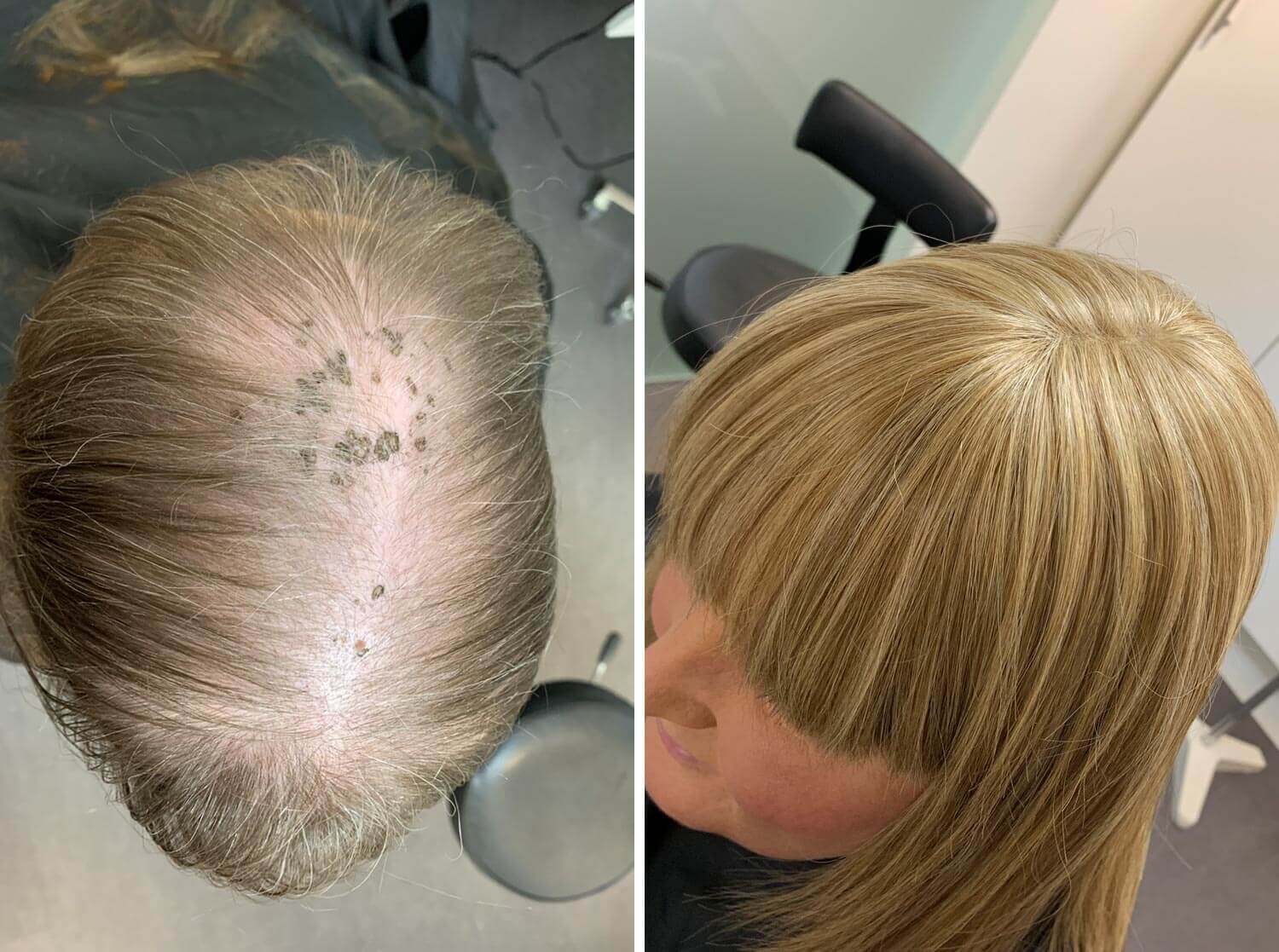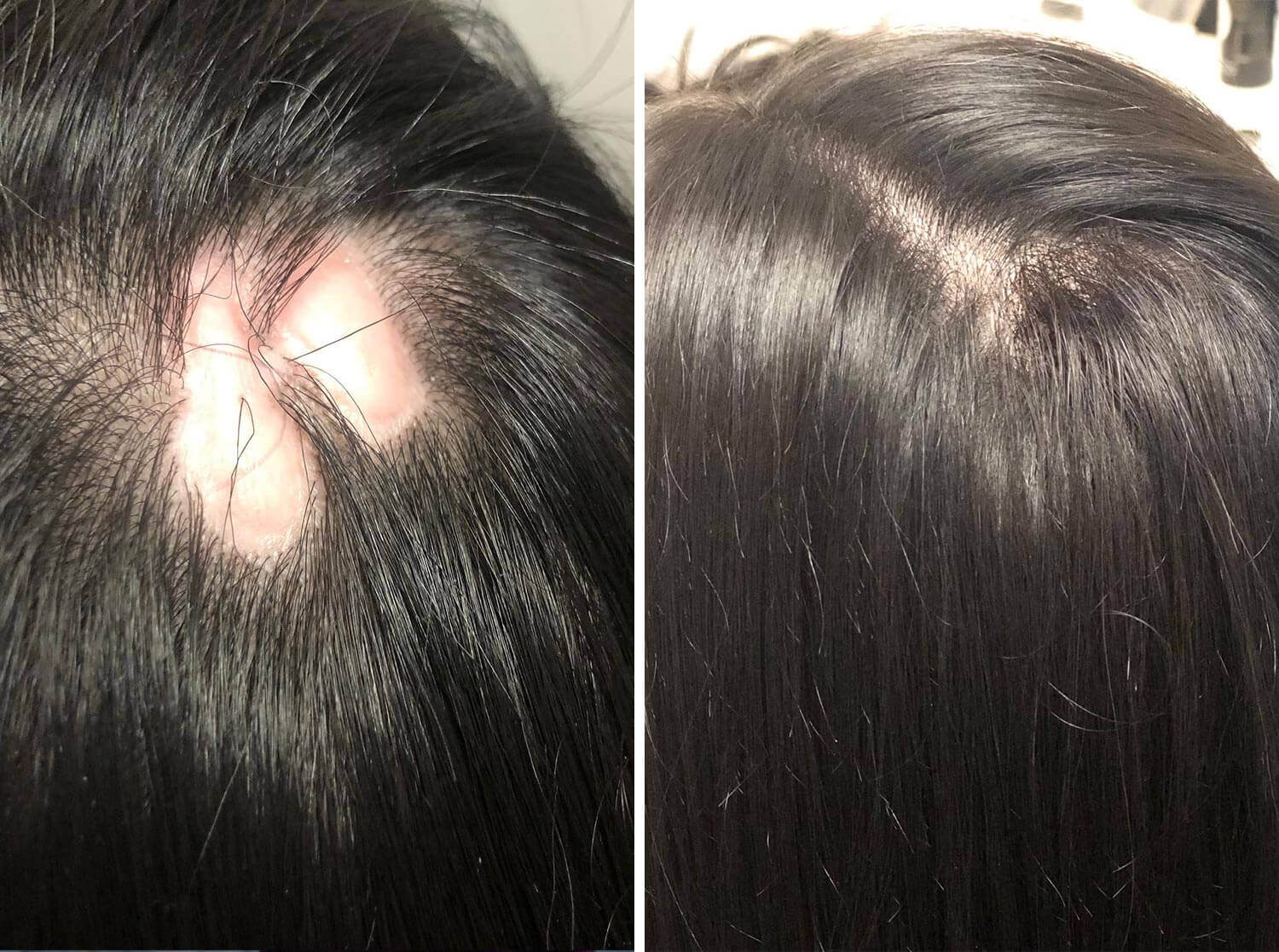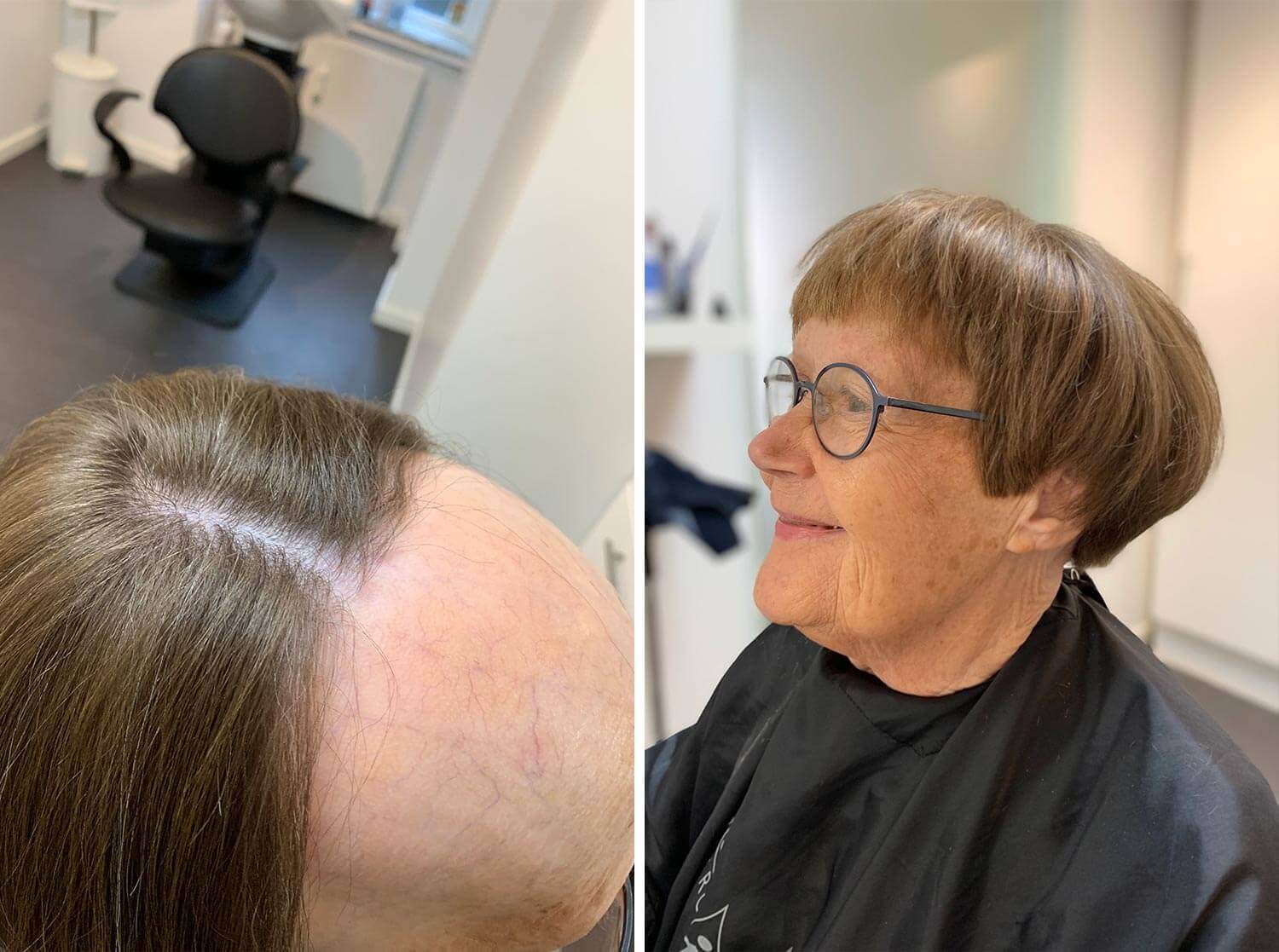
What is alopecia?
Alopecia areata (or just alopecia in daily speech) is an unpredictable disease that can affect both men and women - regardless of age. More specifically, it is an autoimmune skin disease where the body's own immune system attacks the hair follicles. The growth cycle of the hair stops and the hair begins to fall. Alopecia is found in different variations, of which alopecia areata - patchy baldness - Is the most widespread.
Alopecia often begins with a punctual hair loss on the head. The hair loss varies in the individual and the affected area can change size and scope. If all the hair is lost on the head, the condition alopecia totalis is called. If all the hair is lost on the body, the condition is called alopecia universalis. Alopecia is diagnosed by the dermatologist, often based on blood tests to exclude other diseases.
Alopecia Totalis and Alopecia Universalis
There are also other forms of alopecia that are more rare than Alopecia Areata (spot scaling). One is Alopecia Totalis, which - as the name also suggests - leads to losing all hair on your head. If the hair loss develops into the rest of the body, the disease is called alopecia universalis.
Who gets Alopecia?
Alopecia is more commonly found among individuals who have a family history of autoimmune disorders. These can include conditions such as diabetes, lupus, thyroid disease, celiac disease, or atopic eczema. Both women and men are equally affected by the condition. While alopecia can develop at any age, more than half of the cases begin with the first signs appearing before or during the person's 20s. The prevalence of alopecia remains consistent and is the same worldwide. Although the exact cause of alopecia is unknown, genetics is generally considered the determining factor. Other triggers, such as stress and trauma, are also suspected to potentially contribute to the onset of alopecia.
Women can also experience androgenetic alopecia, which is a significant thinning of the hair on the top of the head. Androgenetic alopecia is hormonally driven and, like other forms of alopecia, can be hereditary.
Alopecia and treatment options
Currently, there are no effective, approved treatments for alopecia. However, a new medication from the United States is currently undergoing clinical trials in Denmark. The most commonly used treatment options include corticosteroid therapy and light therapy. Some patients may experience a temporary reduction in symptoms while undergoing treatment, but overall, it is difficult to predict the likelihood of hair regrowth.
Ongoing research is focused on developing new treatment methods, primarily involving immunomodulating agents. However, it is important to be aware that these treatments may carry a risk of significant side effects.
Facts about alopecia
According to sundhed.dk, one of the largest health portals in Denmark, approximately 1.7% of the population is affected by alopecia to some degree. Of those diagnosed, around 80% will experience partial or complete hair regrowth within a few years. This also means that 20% may face permanent hair loss. In total, alopecia affects up to 100,000 people annually in Denmark.
Get a professional hair consultation
Alopecia can affect anyone, which is why our solutions for managing hair loss are as diverse as the individuals who experience it. Contact us to learn more about how we can help you find a realistic and natural-looking hair solution.
We offer a free email consultation where you can explore the various options available to help you achieve the look you desire. To begin, please send an email to Lise Toftild describing your hair loss, whether you have been examined by a doctor or dermatologist, and if you have received a formal diagnosis.
We also kindly ask that you attach photos of your hair loss—one from each side, one from the front, and one from the top—to help Lise determine the most suitable solution for you. Additionally, please describe your preferences regarding hair appearance and your level of daily activity.
Lise Toftild will then respond with a suggested solution tailored to your needs. Please also indicate which of our locations you would prefer to visit: Aalborg, Aarhus, or Frederiksberg.
Please note: Response time may be up to seven business days. Do not schedule an appointment until you have received a reply from Lise. Lise@toftild.com
Hair solution for alopecia
If you have Alopecia Areata—also known as patchy hair loss—you may be eligible for a custom-made hair solution from Hår for Livet® by Toftild, designed to cover only the areas affected by baldness. The solution does not necessarily have to be a full wig; it can also consist of smaller hairpieces that are attached directly to the specific areas where hair is missing.
You are more than welcome to call us for advice and guidance on all matters related to alternative hair solutions.


Alopecia and subsidy to a wig
If you are affected by alopecia to any degree and find that it significantly impacts your self-image and quality of life, there is help available. The functional impairment caused by losing large portions—or all—of your hair can be substantially alleviated with a wig or hair topper.
Alopecia is considered a functional impairment when the condition is diagnosed as permanent. This means you may be eligible to apply for financial support from your danish kommune to cover the cost of a wig or toupee, or at least some of it. The subsidy is granted based on an individual assessment of your specific situation.
Alopecia falls under the scope of support available through Section 112 of the Danish Social Services Act (Serviceloven). In this context, a wig that helps manage the effects of alopecia is considered a personal assistive device.
You are free to use the granted subsidy with any supplier of your choice—even if your kommune has a purchasing agreement with a different provider.
You can find the application for financial support on your borgerservice.dk. Please note that the application must be submitted digitally.
Have you lost your brows?
With alopecia universalis, you may experience complete or partial loss of your eyebrows. While some individuals choose to have their eyebrows tattooed, others are turning to an innovative and convenient alternative: Eyebrow stickers
These stickers work much like temporary tattoos. Simply cut out the desired shape, place it on clean, hair-free skin, dab with a damp cloth—and just like that, you have natural-looking eyebrows again.
The eyebrow stickers are available in five different styles and eleven color options.


What solutions are available?
Depending on whether you have Alopecia Areata (patchy hair loss) or Alopecia Totalis, which involves complete hair loss on the scalp, different solutions may be appropriate.
In some cases of Alopecia Areata, a hair topper can be an excellent and flexible option for covering bald patches. For many individuals, a standard wig offers the most suitable solution. Standard wigs are available in a wide range of colors, styles, and sizes—and we often have them in stock or can order them with short delivery times.
If a standard wig does not meet your needs, we offer Hair for life by Toftild—custom-made wigs tailored specifically for you. These full or partial wigs are crafted based on a precise mold of your scalp, ensuring a 100% optimal fit. The wig can be securely attached, allowing you to wear it comfortably around the clock—even while sleeping.
 Gratis fragt over 699 kr.
Gratis fragt over 699 kr. 1-3 dages levering
1-3 dages levering












